Results 8,541 to 8,550 of 12096
Thread: Anandtech News
-
08-21-18, 07:51 PM #8541
Anandtech: Hot Chips 2018: IBM Power9 Scale Up CPU Live Blog
The biggest part of the show are the server talks in the last session of the last day. All four talks are worth covering, and the first talk is from IBM, detailing both its newest Power9 'Scale Up' version of its processor family, as well as an introduction to PowerAXON, its new connectivity IP. The talk is set to start at 5pm PT / midnight UTC.
More...
-
08-21-18, 09:35 PM #8542
Anandtech: Hot Chips 2018: NEC Vector Processor Live Blog
We saw this at Supercomputing last year: NEC's new Vector PCIe co-processor. I've wanted to write about it for a while, so I'm glad it's being presented here at Hot Chips. The talk is set to start at 6pm PT / 1am UTC.
More...
-
08-22-18, 06:51 AM #8543
Anandtech: Qualcomm Begins Sampling of 7nm Next-Gen SoC
Today Qualcomm announces it has begun to sampling of its next generation Snapdragon SoC. The announcement is unusual as in the past we’ve never really had sampling announcements. Usually new silicon samples start around 4-6 months before commercial device availability.
Recently, Huawei had let it slip in an official press release that the new Kirin 980 in the upcoming Mate 20 will be manufactured on a 7nm process node. Today’s announcement from Qualcomm seems to be a “me too!” shout-out response ahead of competitor's announcements over the next few weeks.
The next-generation Snapdragon SoC will be manufactured on TSMC’s 7FF process node, bringing with it the associated performance and power benefits over current generation silicon. The new SoC can be paired with Qualcomm’s X50 modem in order to enable the first generation 5G smartphones next year.
Qualcomm discloses we’ll see the full details of the next-generation flagship SoC and platform in the fourth quarter. Overall the only surprise in today’s news is the fact that Qualcomm is willing to talk about sampling timelines; the timing itself doesn’t seem different to what has happened in prior years, and we’ll still quite a few months away from the first commercial devices, most likely to happen in 1Q19.
Related Reading- TSMC Kicks Off Volume Production of 7nm Chips
- Arm's Cortex-A76 CPU Unveiled: Taking Aim at the Top for 7nm
- Qualcomm Announces New X50 5G Modem, First Gigabit Class LTE Network and Router
- Qualcomm Affirms Dozens of Carrier & Manufacturer Partnerships For 5G Trials & 2019 Product Launches
- Qualcomm Announces Their First 5G mmWave Antenna Module: QTM052, Coming This Year
- Samsung Releases Exynos Modem 5100 - First Multi-Mode 5G Modem
More...
-
08-22-18, 07:31 AM #8544
Anandtech: The Corsair RM850x (2018) PSU Review: Exceptional Electrical Performance
In today's review we are taking a look at the new revision of Corsair's RM850x power supply. Corsair's RM series is renowned for delivering high performance and quiet operation at a reasonable price. The new revision boasts upgraded electrical efficiency, better performance, and a 10-year warranty, all without increasing the price of the series.
More...
-
08-22-18, 04:01 PM #8545
Anandtech: NVIDIA Teases GeForce RTX 2080 Performance Numbers, Announces Ansel RTX
Concluding their Gamescom festivities for their newly-introduced GeForce RTX 20-series, NVIDIA has revealed a bit more about the hardware, its features, and its expected performance this evening. Tonight NVIDIA is announcing the new Ansel RTX features in GeForce Experience, as well as some game performance metrics for the GeForce RTX 2080 up against the GeForce GTX 1080. After recent hands-on demos featuring real-time raytracing, NVIDIA is offering some numbers for out-of-the-box and Deep Learning Super Sampling (DLSS) performance in traditionally rendered games.
Starting with NVIDIA’s DLSS – and real-time raytracing for that matter – we already know of the supported games list. What they are disclosing today are some face-value 4K performance comparisons and results. For DLSS, for now we can only say that it uses tensor core-accelerated neural network inferencing to generate what NVIDIA is saying will be high-quality super sampling-like anti aliasing. Though for further technical information, this is a project NVIDIA has been working on for a while, and they have published some blogs and papers with some more information on some of the processes used. At any rate, the provided metrics are sparse on settings or details, and notably measurements include several games rendered in HDR (though HDR shouldn't have a performance impact).NVIDIA RTX Support for Games
As of August 20, 2018Game Real-Time Raytracing Deep Learning Super Sampling (DLSS) Ark: Survival Evolved - Yes Assetto Corsa Competizione Yes - Atomic Heart Yes Battlefield V Yes - Control Yes - Dauntless - Yes Enlisted Yes - Final Fantasy XV - Yes Fractured Lands - Yes Hitman 2 - Yes Islands of Nyne - Yes Justice Yes JX3 Yes MechWarrior 5: Mercenaries Yes Metro Exodus Yes - PlayerUnknown's Battlegrounds - Yes ProjectDH Yes - Remnant: From the Ashes - Yes Serious Sam 4: Planet Badass - Yes Shadow of the Tomb Raider Yes - The Forge Arena - Yes We Happy Few - Yes
Otherwise, NVIDIA presented a non-interactive Epic Infiltrator 4K demo that was later displayed on the floor, comparing Temporal Anti Aliasing (TAA) to DLSS, where the latter provided on-average near-identical-or-better image quality but at a lower performance cost. In this case, directly improving framerates. To be perfectly honest, I spent the entire floor time talking with NVIDIA engineers and driver/software developers, so I have no pictures of the floor demo (not that anything less than a direct screenshot will really do it justice). Ultimately, the matter of DLSS is somewhat nuanced and there isn’t much we can add at the moment.
Overall, the idea is that even in traditionally rasterized games without DLSS, the GeForce RTX 2080 brings around 50% higher performance than the GeForce GTX 1080 under 4K HDR 60Hz conditions. Because this excludes real-time raytracing or DLSS, this would be tantamount to ‘out of the box’ performance. Though there were no graphics settings or driver details to go with these disclosed framerates, so I'm not sure I'd suggest reading into these numbers and bar charts one way or another.
Lastly, NVIDIA announced several new features, filters, and supported games for GeForce Experience’s Ansel screenshot feature. Relating to GeForce RTX, one of the features is Ansel RT for supported ray-traced games, where a screenshot can be taken with a very high number of rays, unsuitable for real-time but not an issue for static image rendering.
Ansel RTX also leverages a similar concept to the tensor core accelerated DLSS with ‘AI Up-Res’ super resolution, which also works for games not integrated with Ansel SDK.
In terms of the GeForce RTX performance, this is more-or-less a teaser of things to come. But as always with unreleased hardware, judgement should be reserved until objective measurements and further details. We will have much more to say when the time comes.
More...
-
08-22-18, 06:08 PM #8546
Anandtech: Dell Launches Gaming 24 and Gaming 27 Displays: 1 Ms Response, 144/155 Hz
Dell has announced its new displays aimed at gamers. The new 24-inch and 27-inch Gaming-series monitors feature a 1 ms response time, an up to 155 Hz refresh rate, as well as AMD’s FreeSync dynamic refresh rate technology.
The latest lineup of Dell Gaming displays includes two models: the 24-inch S2419HGF and the 27-inch S2719DGF. Both are based on TN panels that can hit 350 nits of brightness and a 1000:1 contrast ratio. Meanwhile, since we are dealing with TN technology, the monitors have typical, somewhat narrow 160/170 degree viewing angles of the tech.
The smaller monitor has a 1920×1080 resolution and a 120 Hz native refresh rate, and can be overclocked to 144 Hz. Meanwhile, the larger one has a 2560×1440 resolution and supports a 144 Hz refresh rate that can be overclocked to 155 Hz. Both monitors support FreeSync technology with a minimum refresh rate of 40 Hz.
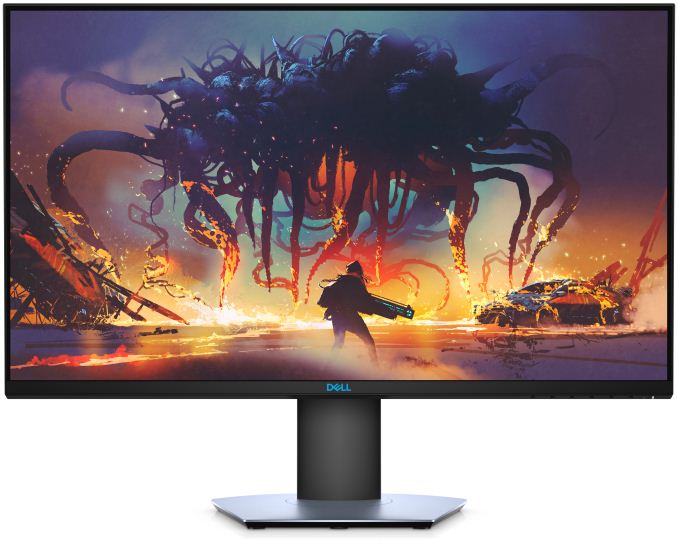
Both monitors have HDMI and DisplayPort inputs, a dual or triple-port USB 3.0 hub, a headphone input, a line-in, and so on. And the displays also feature adjustable stands that can regulate height, tilt, swivel, and pivot.
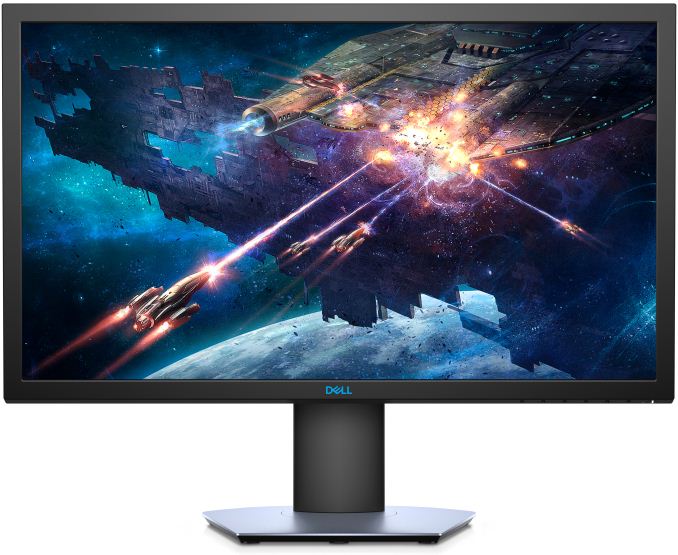
The new Dell Gaming monitors will be available starting from August 28, 2018. The S2419HGF will cost $320, whereas the S2719DGF will be priced at $550.
Related Reading:Dell Gaming Displays S2419HGF S2719DGF Panel 24" TN 27" TN Native Resolution 1920 × 1080 2560 × 1440 Maximum Refresh Rate 120 Hz (native)
144 Hz (overclocked)144 Hz (native)
155 Hz (overclocked)Dynamic Refresh Rate FreeSync
40 - 120/144 HzFreeSync
40 - 144/155 HzResponse Time 1 ms (gray-to-gray) Brightness 350 cd/m² Contrast 1000:1 Viewing Angles 160°/170° horizontal/vertical Color Gamut 84% NTSC (CIE 1976) Pixel Pitch 0.2767 × 0.2767 mm 0.2335×0.2335 mm PPI 91.79 108.8 Inputs 2 × HDMI 1.4
1 × DisplayPort 1.21 × HDMI 1.4
1 × HDMI 2.0
1 × DisplayPort 1.2Audio 3.5-mm headphone jack
3.5-mm line inStand Height adjustment up to 130mm,
Tilt: -5°/21°
Swivel: -45°/45°
Pivot: -90°/90°Power Consumption Standby < 0.5 W Maximum 54 W 85 W
- Dell's Spring Range: New 8th Gen Alienware, Laptops, and Monitors
- ASUS Announces 27-Inch VP278QGL Entry-Level Gaming LCD: 1080p TN w/Freesync
- AOC Launches Inexpensive IPS WQHD 31.5-Inch Q3279VWFD8 Gaming LCD with FreeSync
- AOC Expands G90-Series Monitors: 144 Hz and FreeSync
Gallery: Dell Launches Gaming 24 and Gaming 27 Displays: 1 Ms Response, 144/155 Hz Refresh





More...
-
08-23-18, 07:12 AM #8547
Anandtech: The MSI Z370I Gaming Pro Carbon AC (mITX) Motherboard Review: Balanced Gam
Today we're looking at one of MSI's Mini-ITX motherboards, the Z370I Gaming Pro Carbon AC. The Gaming Pro Carbon AC supports 8th Gen Intel Core Coffee Lake-based processors with DDR4 memory support up to DDR4-4600. The board includes the latest Realtek audio codec, along with Nahimic 2+ audio processing, Intel-based LAN and wireless, USB 3.1 ports out back, a well as a single M.2 drive. RGB is also in abundance, all in a Mini-ITX package.
More...
-
08-23-18, 08:30 AM #8548
Anandtech: Alienware Installs NVIDIA’s GeForce RTX Cards In Aurora and Area-51 Deskto
Alienware this week announced its latest versions of Aurora and Area-51 desktops, the most notable change being that the new models will be equipped with NVIDIA’s latest GeForce RTX graphics cards. The systems are expected to be based on Intel’s Z370 and X299 platforms as well as current-gen CPUs processors, but will feature a considerably higher performance GPU.
Dell’s Alienware Aurora is the company’s mid-tower desktop powered by enthusiasts-class processors. These PCs will soon be offered with NVIDIA’s GeForce RTX 2070, 2080 and 2080 Ti GPUs. Select configurations will use two of such graphics adapters. The Aurora systems start at $1,900, but once equipped with NVIDIA’s GeForce RTX boards, they will naturally cost more.
The Alienware Area-51 is Dell’s flagship desktop based on Intel’s HEDT processors with up to 18 cores. The Area-51 machines come in Alienware’s triad chassis and can be equipped with up to two NVIDIA’s GeForce RTX 2070, 2080 and 2080 Ti graphics cards. The most affordable Area-51 desktop costs $5,000 and is now equipped with Intel’s Core i9-7980XE CPU as well as NVIDIA’s GeForce GTX 1080 GPU. In the coming months these systems will be available with more powerful graphics.
Related Reading:
- Dell's Spring Range: New 8th Gen Alienware, Laptops, and Monitors
- Alienware Area-51 Threadripper Edition Announced at E3, Available for Order July 27
- Alienware Refreshes Lineup With Laptop Updates, And Liquid Cooled X51 Desktop
More...
-
08-23-18, 11:03 AM #8549
Anandtech: Dell Adds Per-Key LED Lighting to Alienware 15 and Alienware 17 Laptops
Dell has introduced new versions of its Alienware 15 R4 and Alienware 17 R5 gaming notebooks, which now feature new keyboards with customizable per-key lighting. The systems rely on Intel’s Coffee Lake processors and their only difference from predecessors is the new keyboard.
Starting this Fall, Dell’s Alienware 15 R4 MLK and Alienware 17 R5 MLK laptops will be equipped with new TactX keyboards featuring RGB LEDs and supporting n-key rollover for more than 100 key commands. The keyboards also feature 2.2 mm key travel in a bid to provide a very rapid keystroke response.
The Alienware 15 R4 MLK and Alienware 17 R5 MLK notebooks are based on Intel’s quad-core or six-core processors outfitted with AMD’s Radeon RX 570 or NVIDIA’s GeForce GTX 1060/1070/1080 GPUs. These gaming laptops come with 15.6-inch or 17.3-inch featuring Full-HD, Quad-HD, or Ultra-HD resolution. Those who want higher-performance graphics can attach the Alienware Graphics Amplifier (eGFX chassis) to house desktop graphics cards from AMD or NVIDIA.
Related Reading:
- Dell's Spring Range: New 8th Gen Alienware, Laptops, and Monitors
- Alienware 13 R3: Quad-Core CPU, GeForce GTX 1060, QHD OLED, VR Ready
- Alienware Refreshes The Alienware 15 And 17 Gaming Notebooks At PAX
More...
-
08-23-18, 04:00 PM #8550
Anandtech: Turing Custom: A Quick Look At Upcoming GeForce RTX 2080 Ti & 2080 Cards
Following NVIDIA’s announcement of its latest GeForce RTX 20-series GPUs on Monday, its board partners also introduced their custom-built offerings based on the new processors. As is usually the case, the first wave of products do not feature extreme frequencies or highly-custom designs – and indeed many of them look like they'll be using NVIDIA's reference PCB – but they still offer various customizations and cooling changes relative to NVIDA's own "reference" Founders Ediiton card. Today we are taking a look on these cards and briefly compare their characteristics.
NVIDIA’s GeForce RTX 20-series lineup will initially consist of three models: the RTX 2080 Ti based on the TU102 GPU as well as the RTX 2070 and the RTX 2080 powered by the TU104 processor. The flagship GeForce RTX 2080 Ti GPU features 4352 CUDA cores, a 352-bit memory bus, and carries 11 GB of GDDR6 memory. Meanwhile, the GeForce RTX 2070 and 2080 boards have 2304 and 2944 cores (respectively), a 256-bit memory bus, and carry 8 GB of GDDR6.
Makers of graphics cards cannot activate any additional CUDA cores, but what they can do is increase default and boost frequencies of GPUs, or install high-performance cooling systems, thus altering and improving performance of their products compared to reference video cards designed by NVIDIA. Without further ado, let’s jump right to custom-designed graphics cards based on the TU102 and TU104 GPUs.
Custom GeForce RTX 2080 Ti Graphics Cards
NVIDIA’s reference PCB for the GeForce RTX 2080 Ti, which is being used in their own factory overclocked Founders Edition card, feature a 13-phase VRM and a double-wide dual-fan cooler. The chip developer's Founder’s Edition will ship with the GPU clocked at 1350/1635 MHz (base/boost), but for its partners NVIDIA recommends maximum burst frequency of up to 1545 MHz. In a bid to differentiate themselves from NVIDIA's own design (while ideally fetching a similar price), they'll be implementing their own factory overclocks along with different (and usually larger) coolers..
When it comes to power delivery, only EVGA has confirmed that its TU102-based GeForce RTX 2080 Ti FTW3 and GeForce RTX 2080 Ti FTW3 Ultra cards will feature a custom PCB, in this case implementing a 19-phase (16+3?) VRM. And while it is logical to expect at least some board partners to also do the same, for the moment only EVGA is claiming to do so. For more details, please see comparison of the cards in a table below.
Moving on to cooling systems. ASUS, Colorful, EVGA, Palit, and ZOTAC all plan to offer triple-wide GeForce RTX 2080 Ti graphics cards with massive heatsinks and three cooling fans. Meaning all of these designs should offer very high cooling potentials. In the meantime, Colorful, GIGABYTE, Inno3D, KFA2/Galax, MSI, and PNY will offer slimmer RTX 2080 Ti products with similar triple fan coolers, which typically means good performance amid moderate noise levels.
So far, only Inno3D and MSI have announced a GeForce RTX 2080 Ti board with a hybrid cooler, but expect makers of custom liquid cooling systems to offer specialized waterblocks for cards made by various AIB producers.
It is important that all manufacturers of graphics cards plan to offer ‘inexpensive’ versions of their GeForce RTX 2080 Ti products, often with simplistic blower cooling systems. Ideally these products will hit the streets at NVIDIA's official MSRPs, however given early demand the fact that launch cards frequently sell out, we're not seriously expecting to see cards at MSRP in September.
Speaking of clocks, it is noteworthy that all of the AIB makers that have disclosed base and boost frequencies of their GeForce RTX 2080 Ti cards decided to stick to clocks of Founder’s Edition cards. It is unclear whether this is a precaution on board partners' part, or a requirement of NVIDIA. However, if all AIB producers stick to this strategy, at least initially there will be no custom adapters that will offer higher performance than NVIDIA’s FE boards.
Custom GeForce RTX 2080 Graphics CardsCustom Graphics Cards Based on NVIDIA GeForce RTX 2080 TI GPU Maker Model GPU Clocks
Base
BoostType of Cooler
# of FansWidth Display
OutputsASUS ROG Strix RTX2080TI-O11G-GAMING 1350 MHz
? MHzRegular
Three Fans
w/ 0db Fan Mode2.7-Wide 2×DP 1.4
2×HDMI 2.0b
USB Type-CROG Strix TX2080TI-A11G-GAMING ROG Strix RTX2080TI-11G-GAMING Dual-RTX2080TI-O11G Regular
Two Fans
w/ 0db Fan Mode3×DP 1.4
1×HDMI 2.0b
USB Type-CDual-RTX2080TI-A11G Dual-RTX2080TI-11G Turbo-RTX2080TI-11G Blower
One Fan2-Wide 2×DP 1.4
1×HDMI 2.0b
USB Type-CColorful iGame GeForce RTX 2080 Ti Advanced OC 1350 MHz
1635 MHzRegular
Three Fans2.5-Wide 3×DP 1.4
1×HDMI 2.0b
USB Type-CiGame GeForce RTX 2080 Ti Advanced 1350 MHz
1545 MHzEVGA GeForce RTX 2080 Ti FTW3 ULTRA 1350 MHz
? MHzRegular
Three Fans
ICX22.75-Wide 3×DP 1.4
1×HDMI 2.0b
USB Type-CGeForce RTX 2080 Ti FTW3 GeForce RTX 2080 Ti XC2 ULTRA Regular
Two Fans
ICX2GeForce RTX 2080 Ti XC2 GeForce RTX 2080 Ti XC ULTRA Regular
Two FansGeForce RTX 2080 Ti XC 2-Wide GeForce RTX 2080 Ti Black GeForce RTX 2080 Ti Blower
One FanGIGABYTE GeForce RTX 2080 Ti Gaming OC 11G
GV-N208TGAMING OC-11GC1350 MHz
? MHzRegular
Three Fans2-Wide 3×DP 1.4
1×HDMI 2.0b
USB Type-CGeForce RTX 2080 Ti Windforce OC 11G
GV-N208TWF3OC-11GCInno3D IChiLL GeForce RTX 2080 Ti Black 1350 MHz
? MHzHybrid 2-Wide 3×DP 1.4
1×HDMI 2.0b
USB Type-CGeForce RTX 2080 Ti Gaming OC X3 Regular
Three FansGeForce RTX 2080 Ti X2 OC Regular
Two FansKFA2
GalaxGeForce RTX 2080Ti SG Edition 1350 MHz
? MHzRegular
Three Fans2-Wide 3×DP 1.4
1×HDMI 2.0b
USB Type-CGeForce RTX 2080Ti OC White Regular
Two FansGeForce RTX 2080Ti OC
GeForce RTX 2080Ti Blower
One FanMSI Gaming X Trio 1350 MHz
? MHzRegular
Three Fans? ? Duke ? ? Ventus Regular
Two Fans2-Wide ? Aero Blower
One Fan? Sea Hawk Hybrid
Blower
Two Fans? Palit GeForce RTX 2080 Ti GamingPro OC 1350 MHz
1650 MHzRegular
Two Fans3-Wide 3×DP 1.4
1×HDMI 2.0b
USB Type-CGeForce RTX 2080 Ti GamingPro 1350 MHz
1545 MHzPNY GeForce RTX 2080 Ti XLR8 Gaming Overclocked Edition 1350 MHz
1545 MHzRegular
Three Fans2-Wide 3×DP 1.4
1×HDMI 2.0b
USB Type-C
?GeForce RTX 2080 Ti Blower Blower
One FanZOTAC GAMING GeForce RTX 2080 Ti AMP
ZT-T20810D-10P1350 MHz
? MHzRegular
Three Fans2.5-Wide 3×DP 1.4
1×HDMI 2.0b
USB Type-CGAMING GeForce RTX 2080 Ti Triple Fan
ZT-T20810F-10P1350 MHz
1545 MHzNVIDIA Founder's Edition 1350 MHz
1635 MHzRegular
Two Fans2-Wide 3×DP 1.4
1×HDMI 2.0b
USB Type-CReference 1350 MHz
1545 MHz
Next up are graphics cards based on NVIDIA’s TU104 GPUs — the GeForce RTX 2070 and the GeForce RTX 2080. With the 2080 shipping on September 20th, all of NVIDIA’s allies have introduced their RTX 2080 boards. By comparison, only a handful of designs for the 2070, which ships in October, have been shown off. So we likely won't see the bulk of those until much closer to when they ship.
NVIDIA’s GeForce RTX 2080 Founder’s Edition cards are outfitted with a 10-phase VRM and are clocked at 1515/1800 MHz (base/boost). In fact, NVIDIA’s own RTX 2070 cards also use the same power delivery circuity, so it looks like the GPU designer is fond of that VRM configuration for its TU104 chip.
Again, so far only EVGA has announced two GeForce RTX 2080 graphics cards featuring a 14-phase PWM. Other makers may also offer cards with an enhanced VRM setup, but they remain quiet about this fact right now.
As for massive cooling systems, ASUS, Colorful, EVGA, and Palit intend to offer triple-wide GeForce RTX 2080s with three fans. And Colorful, GIGABYTE, Inno3D, KFA2/Galax, MSI, PNY, and ZOTAC will offer more traditional two-wide 2080s with triple-fan coolers.
MSI plans to release an RTX 2080 card with hybrid cooling, but expect makers of high-end LCS to launch waterblocks for the latest graphics cards too.
Meanwhile, for those who prefer cheaper boards, AIB makers will offer GeForce RTX 2070/2080 products with blower coolers.
When it comes to clocks of custom GeForce RTX 2080 graphics adapters, the situation is identical to the 2080 Ti. None of the board partners have announced cards with any kind of base clock overclock, and meanwhile no one is offering an overclocked boost clock higher than NVIDIA's own Founders Edition cards.
A Preliminary ConclusionCustom Graphics Cards Based on NVIDIA GeForce RTX 2080/2070 GPU Maker Model GPU Clocks
Base
BoostType of Cooler
# of FansWidth Display
OutputsASUS ROG Strix RTX2080-O8G-GAMING 1515 MHz
? MHzRegular
Three Fans
w/ 0db Fan Mode2.7-Wide 2×DP 1.4
2×HDMI 2.0b
USB Type-CROG Strix RTX2080- A8G-GAMING ROG Strix RTX2080-8G-GAMING Dual RTX2080-O8G Regular
Two Fans
w/ 0db Fan Mode3×DP 1.4
1×HDMI 2.0b
USB Type-CDual RTX2080-A8G Dual RTX2080-8G Turbo RTX2080-8G Blower
One Fan2-Wide 1×DP 1.4
1×HDMI 2.0b
USB Type-CColorful iGame GeForce RTX 2080 Advanced OC 1515 MHz
1800 MHzRegular
Three Fans2.5-Wide 3×DP 1.4
1×HDMI 2.0b
USB Type-CiGame GeForce RTX 2080 Advanced 1515 MHz
1710 MHzEVGA GeForce RTX 2080 FTW3 ULTRA 1515 MHz
? MHzRegular
Three Fans
ICX22.75-Wide 3×DP 1.4
1×HDMI 2.0b
USB Type-CGeForce RTX 2080 FTW3 GeForce RTX 2080 XC2 ULTRA Regular
Two Fans
ICX2GeForce RTX 2080 XC2 GeForce RTX 2080 XC ULTRA Regular
Two FansGeForce RTX 2080 XC 2-Wide GeForce RTX 2080 Black GeForce RTX 2080 Blower GIGABYTE GeForce RTX 2080 Gaming OC 8G
GV-N2080GAMING OC-8GC1515 MHz
? MHzRegular
Three Fans2-Wide 3×DP 1.4
1×HDMI 2.0b
USB Type-CGeForce RTX 2080 Windforce OC 8G
GV-N2080WF3OC-8GCGeForce RTX 2070 GAMING OC 8G 1410 MHz
? MHzInno3D GeForce RTX 2080 Gaming OC X3 1515 MHz
? MHzRegular
Three Fans2-Wide 3×DP 1.4
1×HDMI 2.0b
USB Type-CGeForce RTX 2080 X2 OC Regular
Two FansGeForce RTX 2080 Jet Blower KFA2
GalaxGeForce RTX 2080 OC White 1515 MHz
? MHzRegular
Two Fans2-Wide 3×DP 1.4
1×HDMI 2.0b
USB Type-CGeForce RTX 2080 OC GeForce RTX 2080 MSI Gaming X Trio 1515 MHz
? MHzRegular
Three Fans? ? Duke ? ? Ventus Regular
Two Fans2-Wide ? Aero Blower
One Fan? Sea Hawk Hybrid
Blower
Two Fans? Palit GeForce RTX 2080 GamingPro OC 1515 MHz
1815 MHzRegular
Two Fans2.5-Wide 3×DP 1.4
1×HDMI 2.0b
USB Type-CGeForce RTX 2080 GamingPro 1515 MHz
1710 MHzPNY GeForce RTX 2080 XLR8 Gaming Overclocked Edition Triple Fan 1515 MHz
1710 MHzRegular
Three Fans2-Wide ? GeForce RTX 2080 XLR8 Gaming Overclocked Edition Dual Fan Regular
Two Fans? PNY GeForce RTX 2080 Dual Fan ? GeForce RTX 2080 Blower Blower
One Fan? GeForce RTX 2070 XLR8 Gaming Overclocked Edition Triple Fan 1410 MHz
? MHzRegular
Three Fans? GeForce RTX 2070 XLR8 Gaming Overclocked Edition Dual Fan Regular
Two Fans? GeForce RTX 2070 Blower Blower
One Fan? ZOTAC GAMING GeForce RTX 2080 AMP
ZT-T20800D-10P1515 MHz
? MHzRegular
Three Fans2.5-Wide 3×DP 1.4
1×HDMI 2.0b
USB Type-CGAMING GeForce RTX 2080 Blower
ZT-T20800A-10P1515 MHz
1710 MHzBlower
One Fan2-Wide NVIDIA RTX 1080 Founder's Edition 1515 MHz
1800 MHzRegular
Two Fans2-Wide 3×DP 1.4
1×HDMI 2.0b
USB Type-CRTX 1080 Reference 1515 MHz
1710 MHzRTX 1070 Founder's Edition 1410 MHz
1710 MHzRTX 1070 Reference 1410 MHz
1620 MHz
In the coming weeks over a dozen of brands are going to start selling their customized versions of NVIDIA’s GeForce RTX 20-series graphics cards. These boards are equipped with enhanced cooling systems, and while the fundamental designs are frequently similar – commonly using two and three fan open air coolers – there's still a surprising amount of room for innovation (or at least variation) in the space. So it'll be interesting to see which designs end up being the strongest out of the gate.
However it's notable that if the board partners ship their cards with their currently published frequencies – and it's worth noting that we have on occasion seen the clocks change on 3rd party cards ahead of their release – then all of these boards will offer similar performance out of box and users will have to rely on overclocking to gain any benefits over NVIDIA's own Founders Edition cards.
Related Reading:
- NVIDIA Announces the GeForce RTX 20 Series: RTX 2080 Ti & 2080 on Sept. 20th, RTX 2070 in October
- NVIDIA GeForce Gamescom 2018 Keynote Live Blog
- NVIDIA Announces Turing-Powered Quadro RTX Family: RTX 8000, 6000, & 5000 Arrive In Q4’2018
More...
Thread Information
Users Browsing this Thread
There are currently 46 users browsing this thread. (0 members and 46 guests)





 Quote
Quote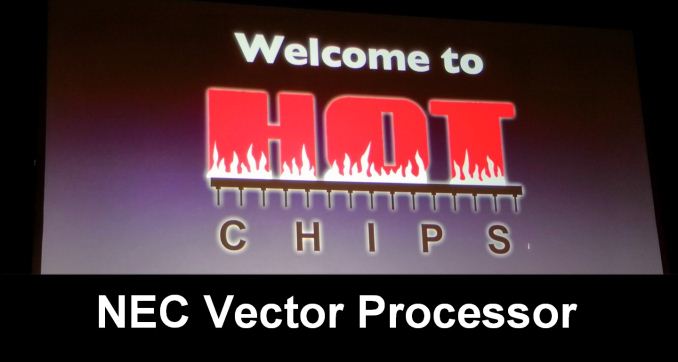

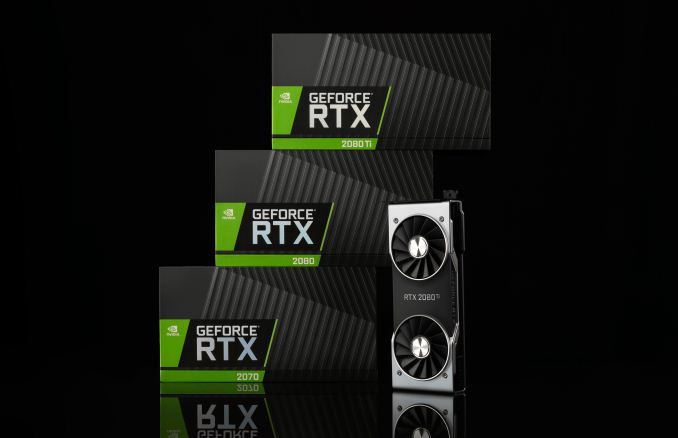
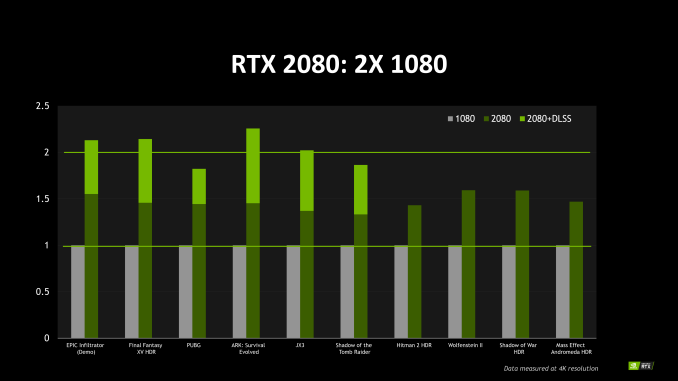
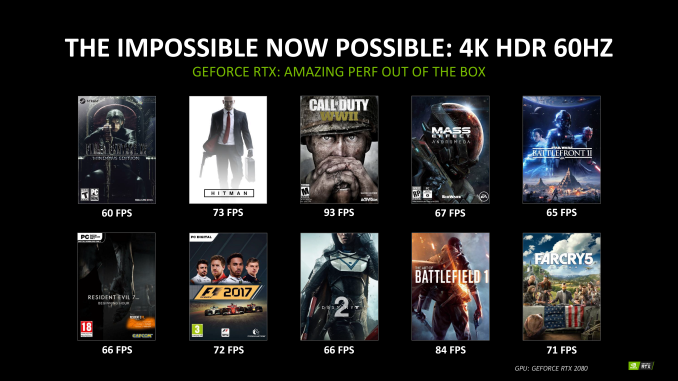
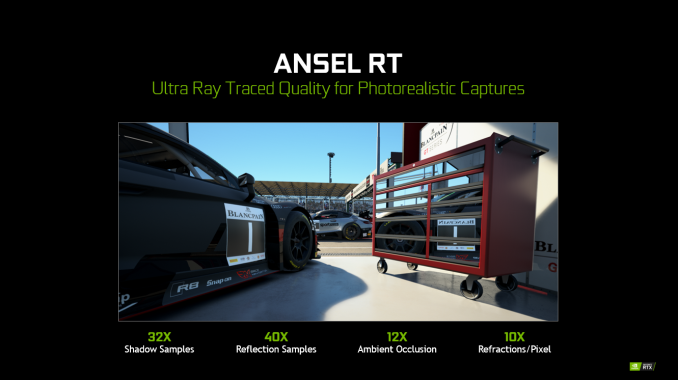

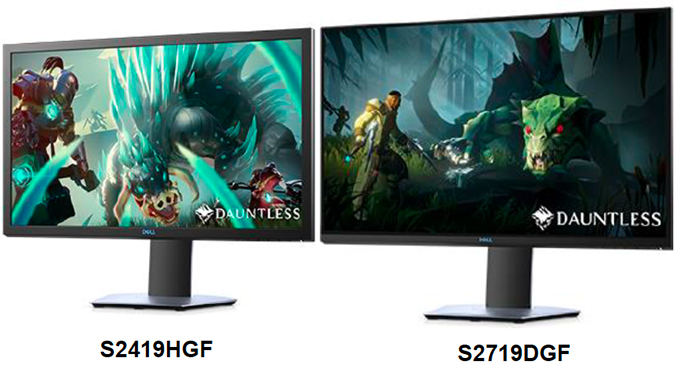
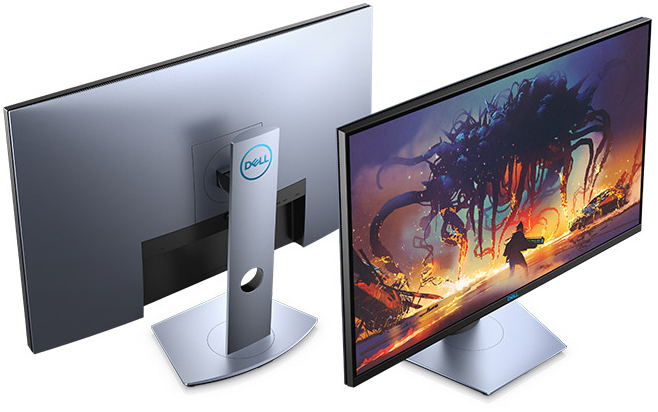
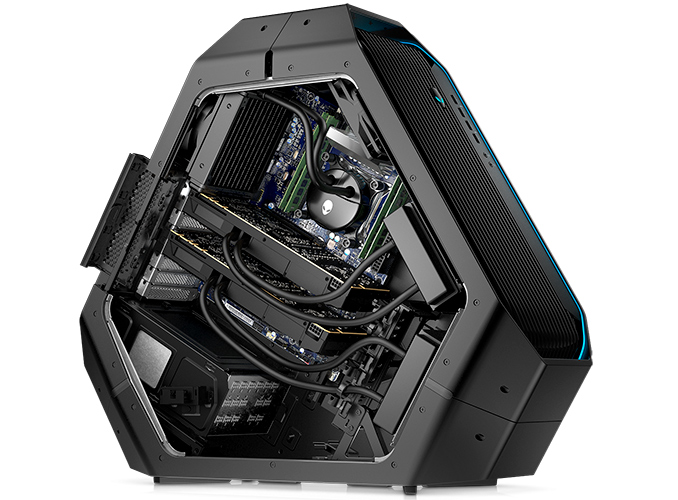
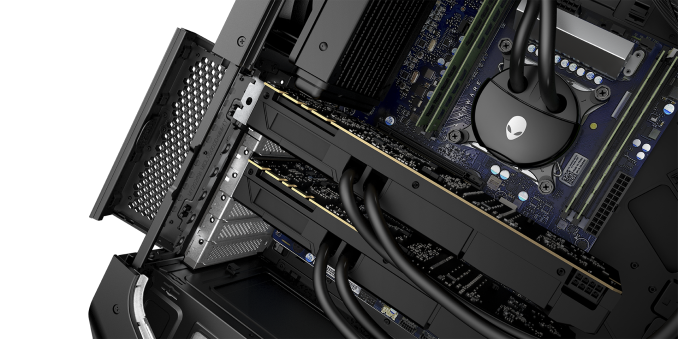
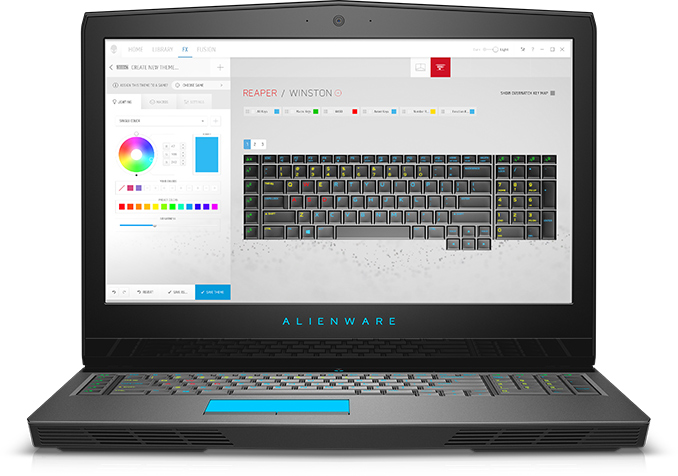
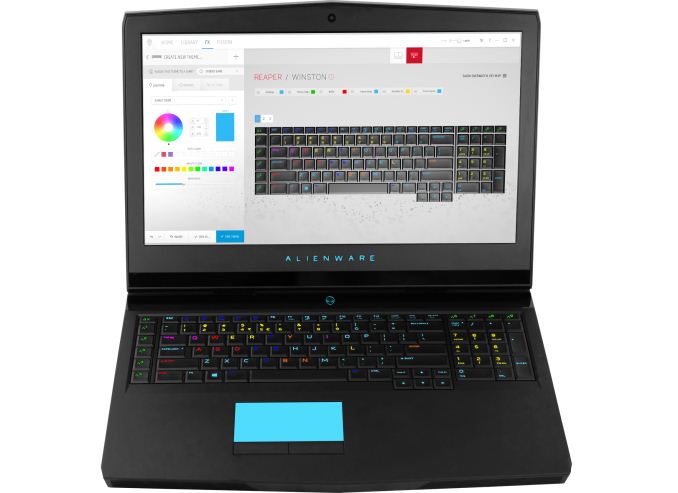

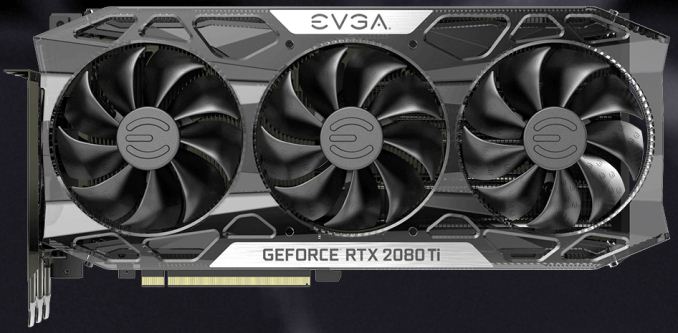

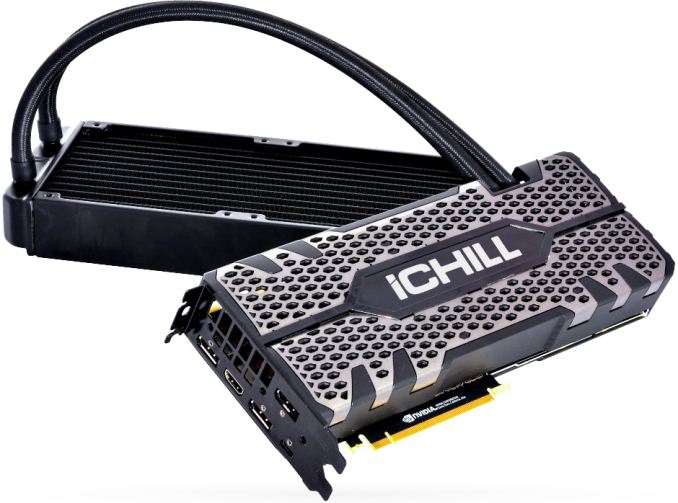
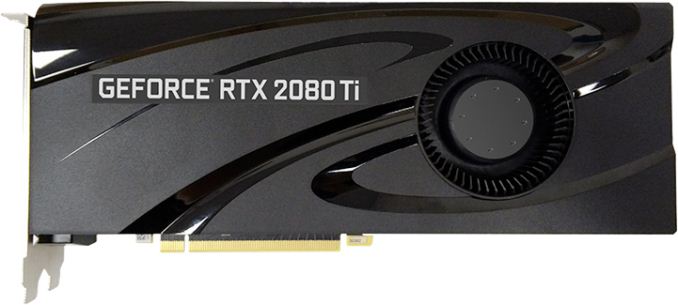

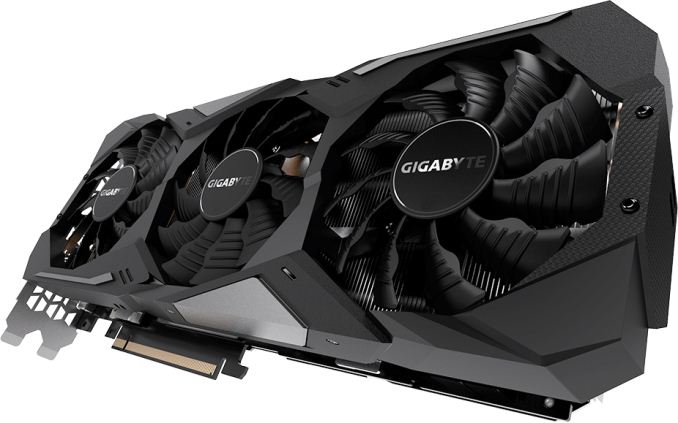
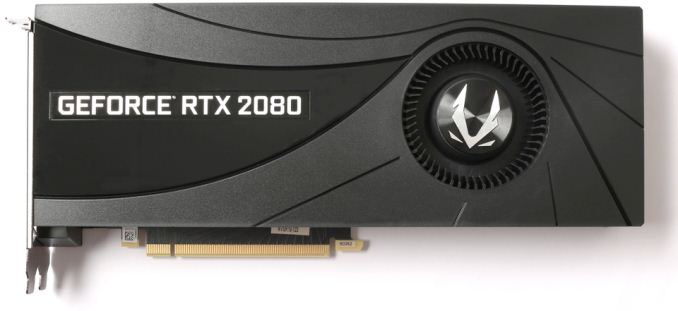
















Bookmarks